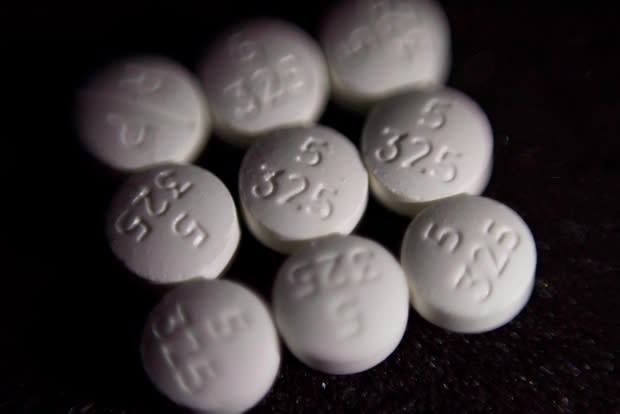Opioid prescription labels heighten awareness of side effects, risks
An Island pharmacist says the warning labels required on opioid prescriptions are creating more awareness about the drugs.
The labels, which were introduced in October, have prompted people to ask more questions about their prescriptions, said Allan Greene, the pharmacy manager at Murphy's Parkdale Pharmacy
"It certainly initiates discussion around, OK, I've prescribed this medication for my pain, but can I take medication back? What are the risks? Does it interact with my other medications? he said.
"Questions that we've had in the past but certainly more people are asking them."
The opioid crisis affecting thousands of Canadians caused Health Canada to mandate that all opioid prescriptions have a yellow warning label.
"Along with the opioid labels, there's an information sheet that Health Canada published as part of this and it has the signs of overdose which I think is good for the general public to know," Greene said.
Labels prompting more discussion
The bright yellow warning sticker says how these drugs can cause dependency, addiction and overdose.
People are beginning to understand just how potent opioids are, Greene said.
'People get their prescriptions often at the pharmacy, and it's just another opportunity for us to have that discussion — to ensure that anybody who is on those pain medications has access.' - Allan Greene, Murphy's Parkdale Pharmacy
"As a group of medications they do come with risks around dizziness and drowsiness and irregular heartbeat and sleeping troubles," he said.
"They work well, but they do come with side-effects and you have to be careful with their use."

The labels have encouraged greater discussion and have prompted people to take more agency over their health, Greene said.
"The more you ask, the better informed you are, the better ... choices you make."
He said it would be ideal to dispense free naloxone kits at a community pharmacies, especially when opioids such as oxycodone and hydromorphone are prescribed.
"I think that's an opportunity in P.E.I. to increase the distribution, because people get their prescriptions often at the pharmacy, and it's just another opportunity for us to have that discussion — to ensure that anybody who is on those pain medications has access."
While P.E.I. does not offer free naloxone kits at pharmacies, it does provide them free at various places across the province such as needle exchange programs, PEERS Alliance and provincial group homes.
More P.E.I. news

